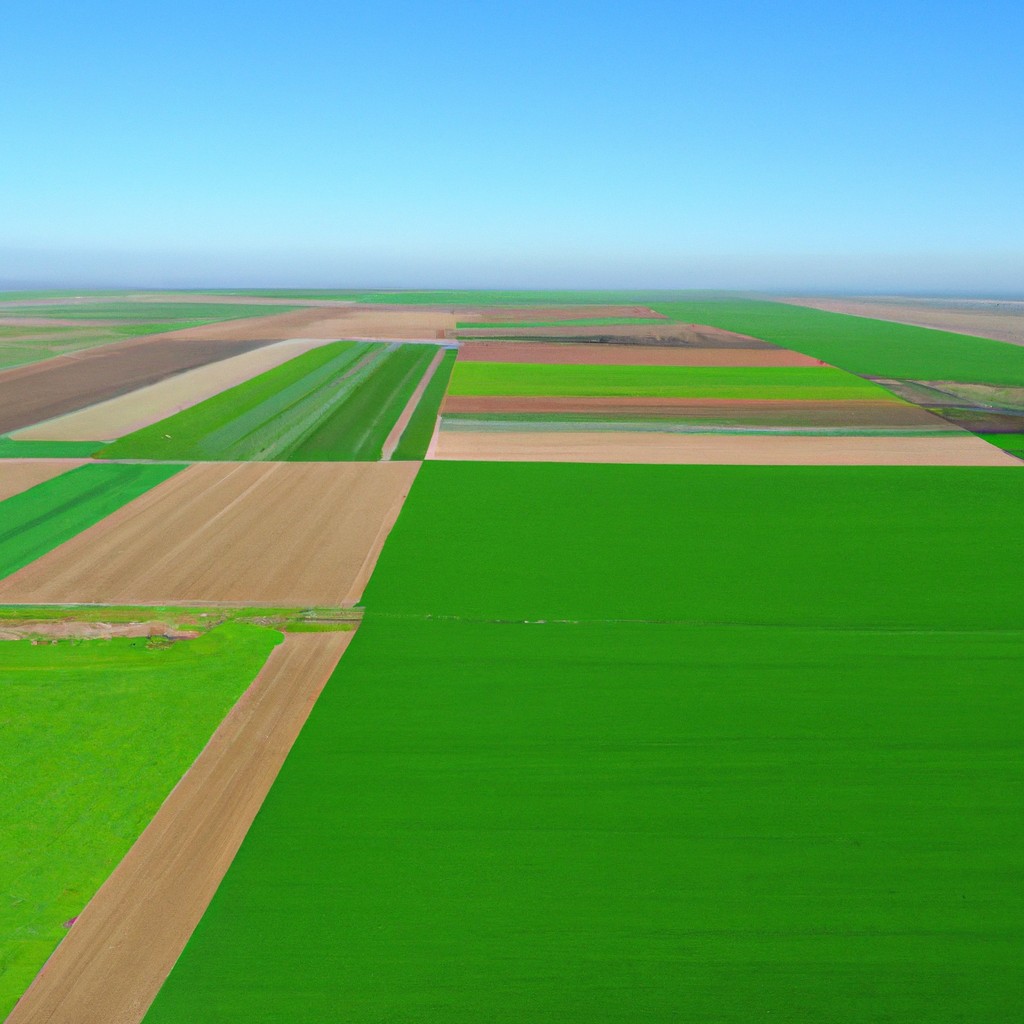This article discusses commercial agriculture in the context of human geography, explaining its impact on economies and environments globally.
Look Inside:
Definition and Characteristics of Commercial Agriculture

Commercial agriculture primarily aims at generating products for sale to retailers or food processing companies. Key characteristics frame its operations differently from subsistence farming, where the focus is on producing enough food to sustain the farmer’s family.
Firstly, this type of agriculture usually covers vast land areas to maximize output and profits. Efficiency is crucial, often leading to the specialization in one or a few types of crops or livestock. This practice benefits from economies of scale but can also lead to a reduction in biodiversity.
Another prominent feature is the high usage of technological inputs—from advanced machinery for planting and harvesting to sophisticated systems for irrigation and pest control. This integration of technology not only boosts yield per hectare but also accelerates production cycles.
Market influence is also a decisive factor. Decisions on what to plant and when are heavily swayed by market demand, price forecasts, and international trade agreements, which can be a double-edged sword. While it opens up farmers to a global market, it also exposes them to global price fluctuations and economic downturns.
Understanding these elements helps in grasping how commercial agriculture shapes food production and distribution on a global scale.
Comparison: Commercial Vs. Subsistence Farming
Commercial agriculture and subsistence farming serve different purposes and operate on vastly different scales.
In commercial agriculture, the primary aim is to produce crops and livestock for sale, often on a large scale. This type of farming is heavily mechanized, relying on advanced technologies and large financial investments to increase productivity and profits. The produce is usually destined for regional, national, or international markets.
Conversely, subsistence farming is about self-sufficiency. Farmers grow enough food to feed themselves and their families. Any surplus might be sold or bartered locally, but the scale is much smaller, and the technology used is often less advanced. Here, the focus is on variety and stability of the food source rather than maximizing output or profit.
These fundamental differences highlight the economic divide in agriculture strategies, where one is market-oriented and expansive, and the other is family-oriented and localized. Consequently, the environmental impact also diverges, with commercial farming often criticized for unsustainable practices like deforestation and high pesticide use, while subsistence farming tends to be more eco-friendly, though it may be less efficient per unit of land.
Economic and Environmental Impacts of Commercial Agriculture
Commercial agriculture significantly boosts economies by creating jobs and stimulating related industries such as food processing and agricultural equipment manufacturing. It also contributes to government revenues through exports. On the flip side, this focus on large-scale production often leads to significant environmental challenges. These include deforestation, soil degradation, and loss of biodiversity, primarily due to the monocultural practices commonly used in commercial farming setups.
Moreover, the heavy use of chemical fertilizers and pesticides in commercial agriculture contaminates water supplies and can disrupt local ecosystems. This agricultural model has also been linked to high carbon emissions due to the intensive use of machinery and transportation.
While commercial agriculture is a powerful economic engine, its sustainability depends on adopting practices that mitigate harmful environmental impacts. Encouragingly, more farmers are turning to integrated pest management and precision farming techniques to address these issues, hoping to strike a balance between economic gain and environmental stewardship.
Role of Technology and Global Market Influence in Commercial Agriculture
Commercial farmers heavily rely on cutting-edge technologies to enhance yields and reduce labor costs. Precision agriculture tools like GPS-guided tractors, drones for crop monitoring, and IoT devices for soil and moisture analysis are transforming operations into highly efficient production systems. This technological evolution supports the constant monitoring and analysis of farm conditions, allowing for swift adjustments that optimize growth environments and resource use.
Furthermore, global market pressures shape commercial agriculture practices. Farmers must adapt to fluctuating commodity prices, changing import-export regulations, and evolving consumer preferences. The increased demand for organic products and non-GMO foods has also spurred innovation in sustainable farming techniques. These market dynamics dictate crop choices, investment in eco-friendly technologies, and marketing strategies, intertwining local agricultural practices with global economic trends.
Understanding these factors helps shed light on the intricate balance commercial farmers must maintain to remain viable and competitive on a global scale.
Future Trends in Commercial Agriculture
Advancements in technology and increasing ecological awareness are guiding trends in commercial agriculture. Precision farming, facilitated by GPS and IoT sensors, allows for meticulous crop and soil management, enhancing yield while minimizing waste. Automation, through the use of drones and robots, is projected to alleviate labor shortages and increase operational efficiencies.
Sustainability also plays a crucial role. Regenerative agricultural practices, focusing on soil health and biodiversity, are gaining traction. These methods reduce dependency on chemical inputs like fertilizers and pesticides, improving long-term viability and decreasing environmental degradation.
Moreover, the push for localizing food supply chains aims to reduce carbon footprints and support local economies. This approach involves fostering closer connections between consumers and food producers, encouraging transparency and food security.
Adaptation to climate change remains a critical focus, as farmers integrate weather-resistant crop varieties and water-efficient irrigation techniques to combat unpredictable weather patterns and water scarcity.
Lastly, consumer preferences are shifting towards organic and ethically produced foods. This trend is driving the adoption of standards and certifications that promote animal welfare, reduce environmental impact, and appeal to health-conscious consumers.




